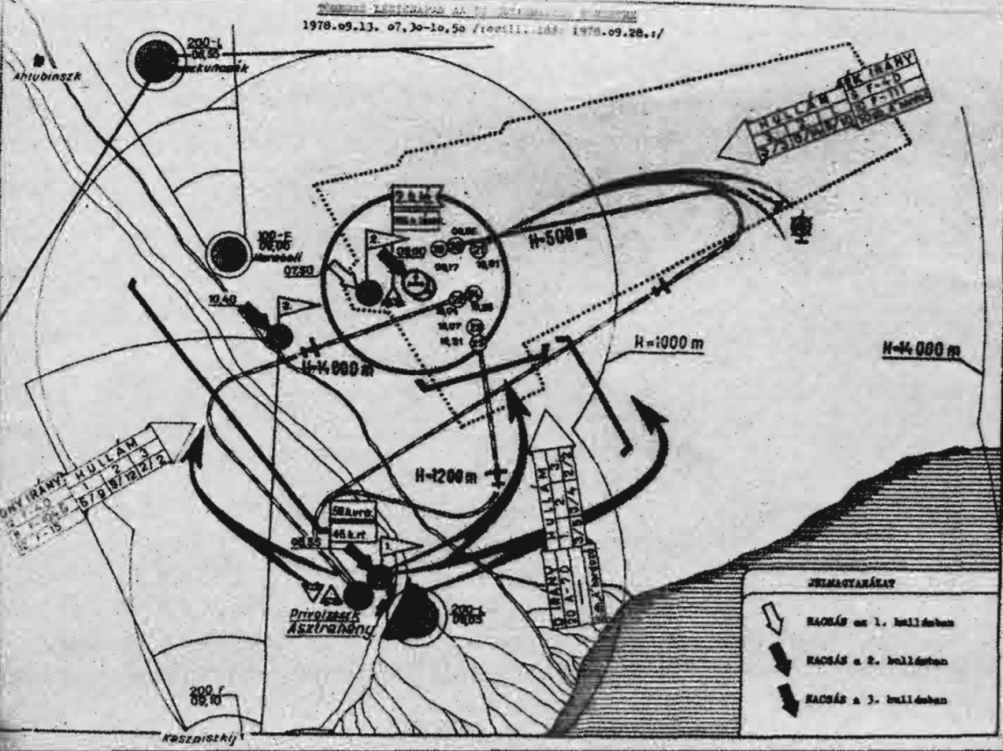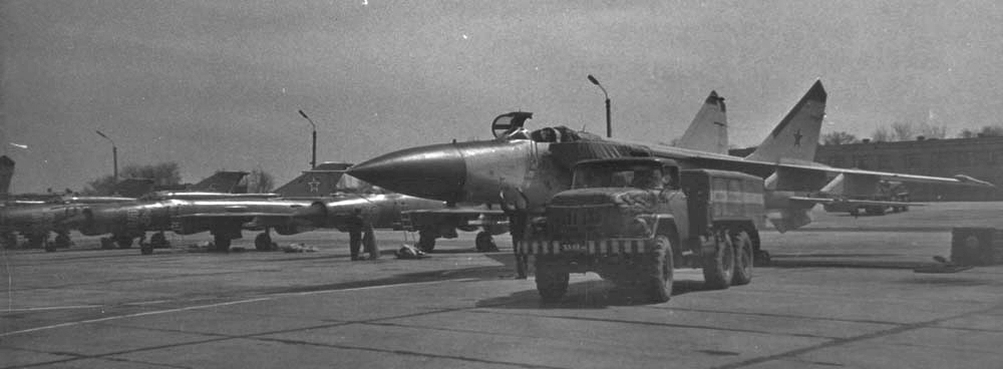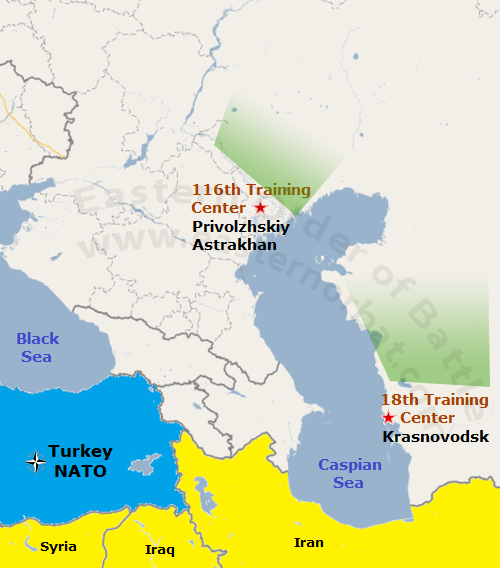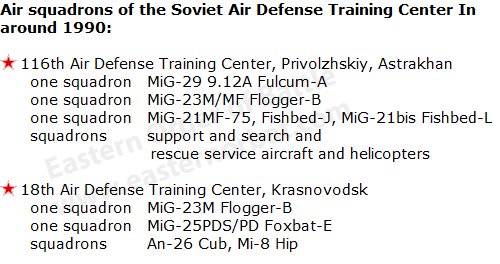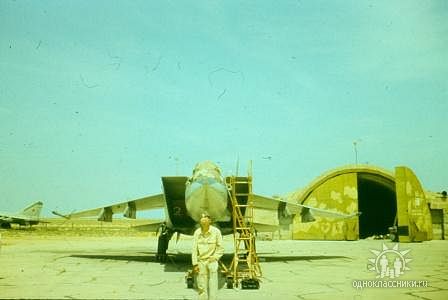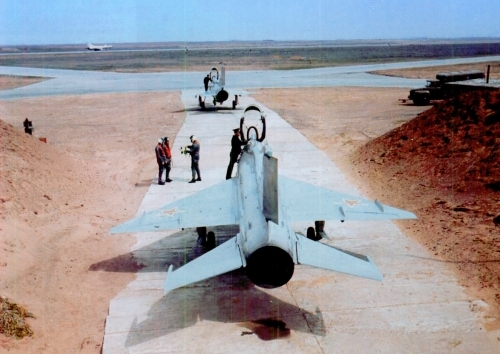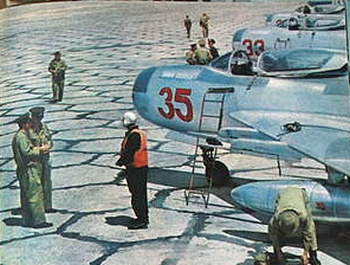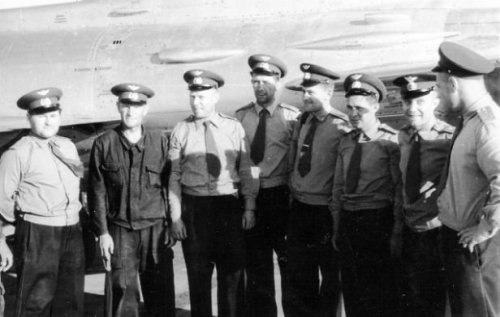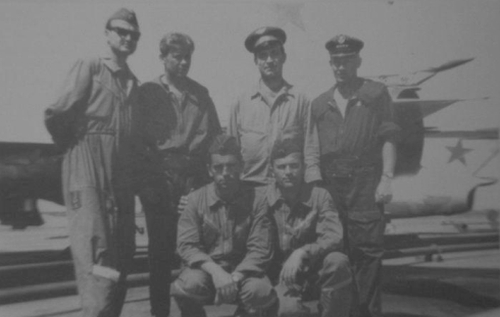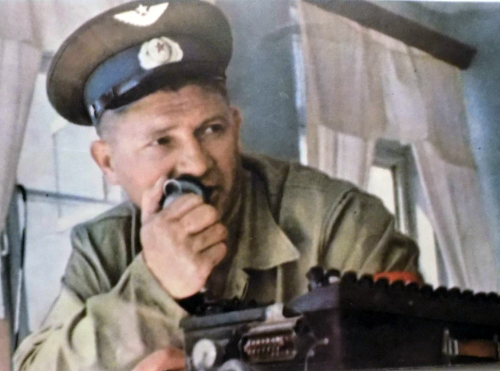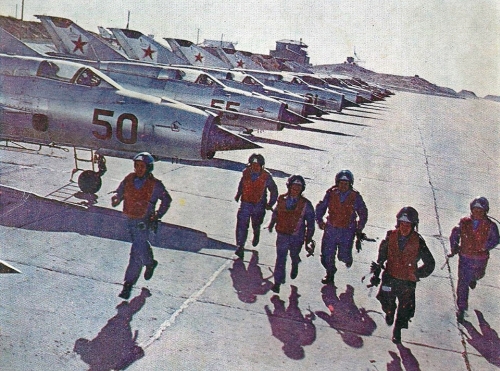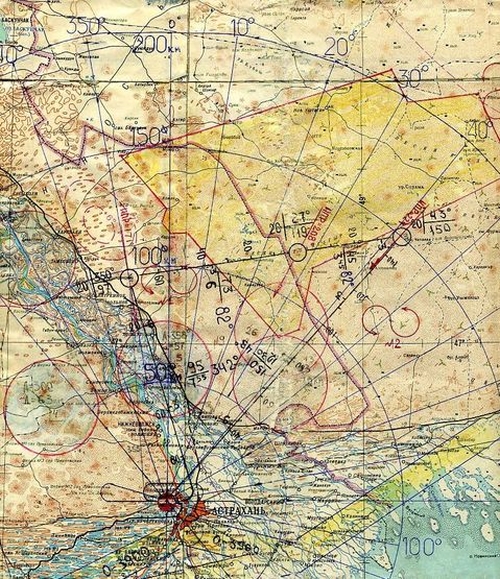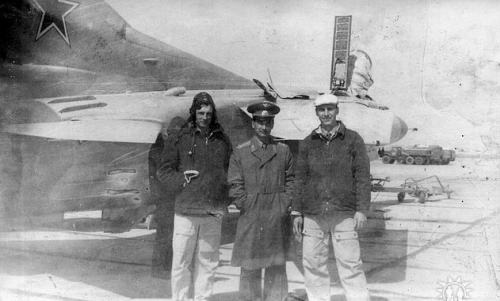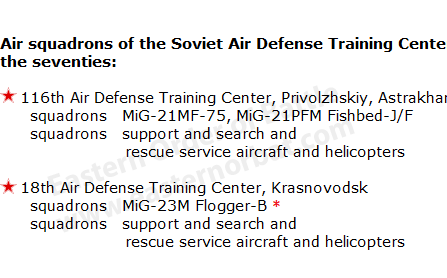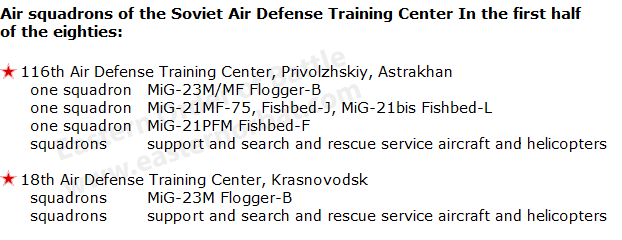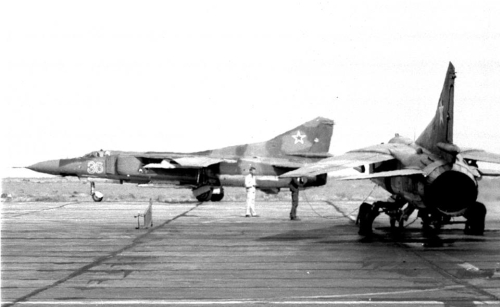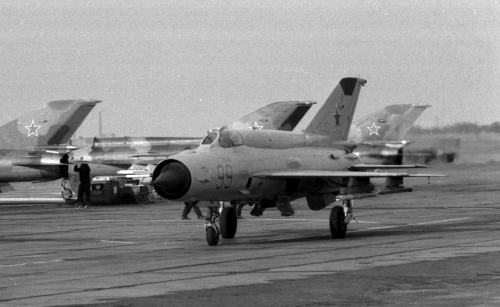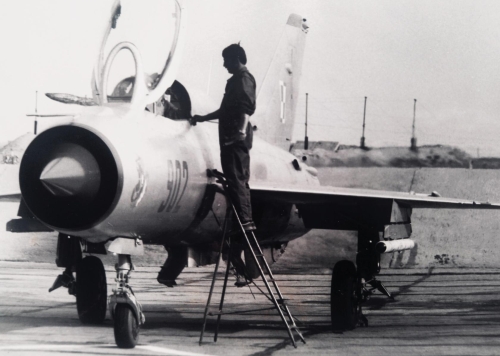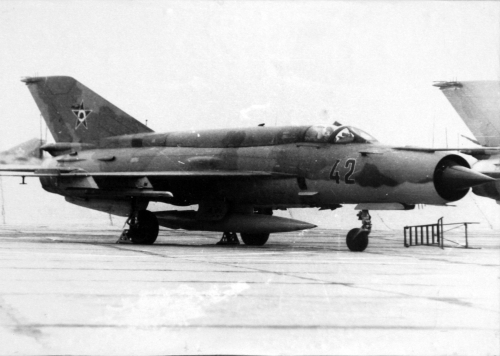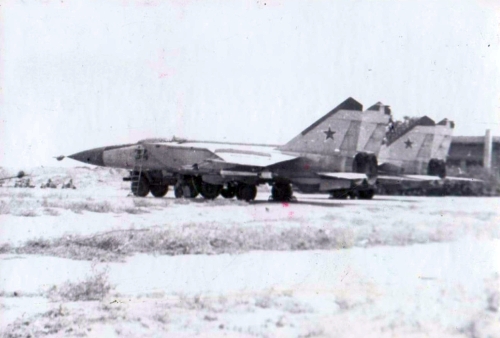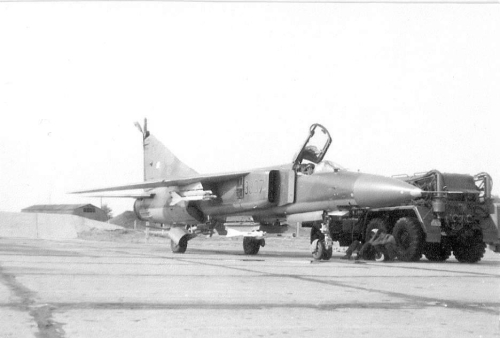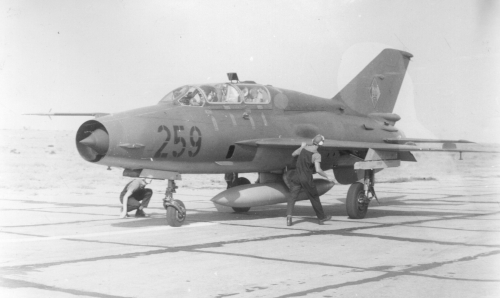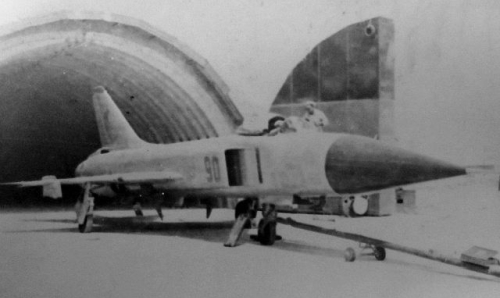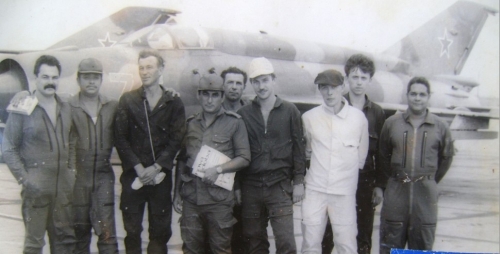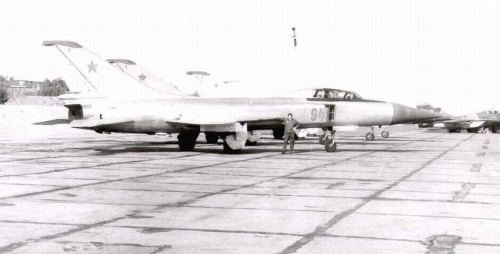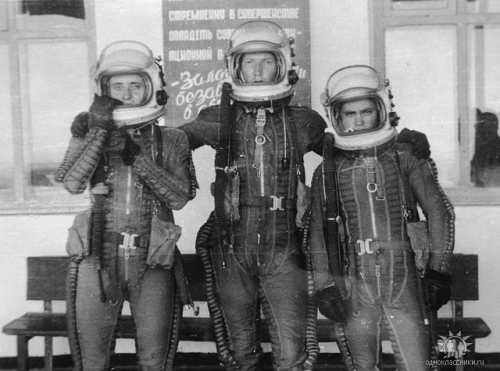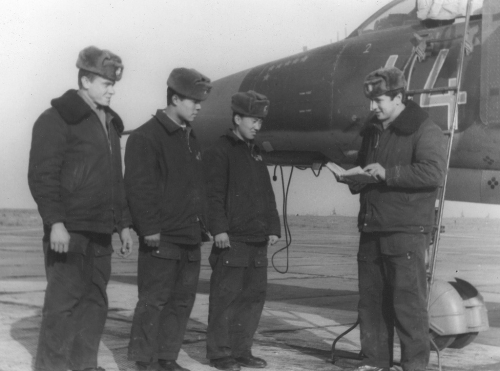|
|
 |
 |
|
Soviet Air Defense Forces
The 116th and the 18th Air Defense
Training Center
|
|
|
 |
 |
 |
 |
|
In 1958 the SA-75 Dvina high-altitude air defense system and the MiG-19PM ‘Farmer-E’ interceptor aircraft with RS-2U air-to-air missile entered the service in USSR. A few years later the Su-9 ‘Fishpot-A’ and the MiG-21 ‘Fishbed’ all-weather, missile-armed interceptor aircraft arrived too. In the early sixties, the independent Air Defense Armies established. These contained air defense command post, anti-aircraft missile units, fighter air regiments and radio technical units together.
There was a need for training centers where units of the air defense corps were able to carry out complex tasks. In the late fifties, the Soviet Air Defense Command established more training centers. The Soviet air defense fighter force used two air defense training center, the 116th Center at Privolzhskiy, Astrakhan military airfield nearly the Volga river and the 18th Center at Krasnovodsk airport next to Caspian Sea eastern coast. There was a training range close to each one, where anti-aircraft missiles and radio-technical units were installed. The entire Kazakh desert was used as a shooting range.
Combat air units could also practice than single, or they could work with their own anti-aircraft missiles and radio technical units, on complex combat training. The Eastern European Warsaw-Pack country's air defense divisions used both Soviet training centers too. Every two-three years each Soviet and Warsaw-Pack's air defense division or corps practiced on the 116th or 18th training center.
|
|
|
|
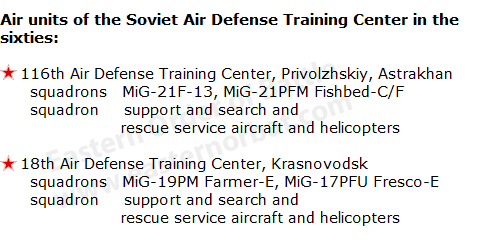 |
|
 |
 |
|
The Soviet fighter air regiments were deployed with its own airplanes to Privolzhskiy or Krasnovodsk airport. The Eastern European Warsaw-Pack country air defense forces sent only their crews and air to air missile in the sixties and seventies. The Soviet Union guaranteed the appropriate fighter aircraft, therefore the two Soviet training centers had MiG-19PM ‘Farmer-E’ and MiG-21F-13 ‘Fishbed-C’ and MiG-21PFM ‘Fishbed-F’ fighter aircraft in the sixties.
|
 |
 |
|
|
 |
 |
|
The air defense fighters used multiple versions of aerial targets:
- The RM-3V ‘raketa-mishen’ target-missile, served as an aerial target. At the MiG-21 'Fishbed', the wingman could launch the RM-3V missile-target too.
- Lavochkin La-17 was the first Soviet unmanned aerial target. The La-17 was directed by radio control.
- PM-6 paratrooper target bomb
- M-15 (MiG-15) ‘Fagot’, M-17 (MiG-17) ‘Fresco’, and M-28 (IL-28M) ‘Beagle’ was an absolute realistic airborne target. Many of the old aircraft after service life were converted to target drones.
In the sixties, they practiced the intercepted of high altitude and high-speed targets.
|
|
|
 |
 |
|
|
 |
|
|
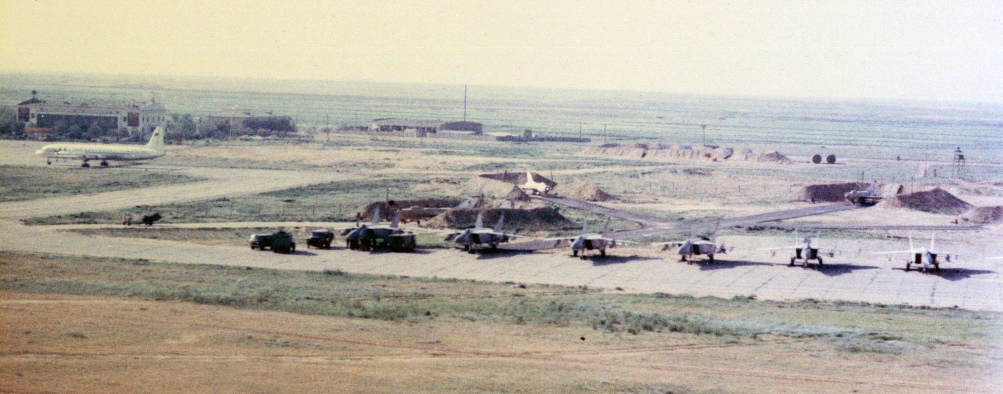 |
 |
 |
|
A guest MiG-25P 'Foxbat-A' unit at the Privolzhskiy, Astrakhan airfield in 1973. In the background the local 393rd Guard Fighter Air Regiment PVO's Su-11 'Fishpot-C' interceptors. The local fighter regiments of the Baku Red Banner Air Defence District (393rd and 179th Guard Fighter Air Regiment PVO) helped the training center. They often flew as a high-speed air target.
|
 |
 |
|
|
 |
 |
|
The split usage airports were already overcrowded, therefore at the end of the seventies, Astrakhan's civil air traffic moved from Privolzhskiy airport to a new airport. At the same time, the 179th Guard Fighter Air Regiment moved from Krasnovodsk Airport to PVO Nebit Dag Airport.
In the 1970s, air defense division or corps conducted very complex exercises at the training centers. The picture below shows you the Hungarian Home Air Defence force's 'STRELBA-78' exercise plan. In 1978 the Hungarian 2nd Home Air Defence Division's units were deployed to the Soviet Union. The 59th Home Fighter Air Regiment's pilots, ground crew, air traffic controllers and command post officers arrived at Privolzhskiy, Astrakhan airport. Meanwhile, the 105th Anti-Aircraft Missile Regiment and radio technical units traveled to Ashuluk training center north of Astrakhan.
|
 |
 |
|
Szepesi Jozsef collection
|
 |
 |
|
At first, the Hungarian 105th Anti-aircraft Missile Regiment and the 59th Home Fighter Air Regiment shoot down air targets on their own with missiles. They used Soviet MiG-21MF-75 ‘Fishbed-J’, MiG-21PFM ‘Fishbed-F’ and SA-75 Dvina ‘SA-2 Guideline’ air defence weapons. Later they carried out complex exercises. According to the exercise plan, the enemy arrived from three directions:
- From southwest direction: eight F-4D Phantom II, eleven F-111 Aardwark and unknown number high speed target
- From north-east direction: twelve F-4D Phantom II, fourteen F-104G Starfighter and unknown number F-15 Eagle
- From south direction: twenty A-7D Corsair
The targets needed to be shot down between 500 and 14000 meters. In the seventies, they already used the high speed RM-207 airborne target too, which imitated the USAF high-speed Boeing AGM-69 SRAM nuclear air-to-surface missile.
|
|
|
 |
 |
|
In the first half of the eighties, the 116th Center got MiG-23M/MF 'Flogger-B' and a small number MiG-21bis 'Fishbed-L' type. The Eastern European Warsaw-Pack Air Defence units could practice with R-23 and R-24 'AA-7 Apex' missiles. With these rockets, targets could have been attacked while flying towards them. They could also practice this at 116th Center on MiG-23MF 'Flogger-B'.
|
|
 |
 |
|
In the second half of the eighties, the Eastern European Warsaw-Pack Air Defence units traveled to Privolzhskiy, Astrakhan airport. Similar to the Soviet units, they used their own aircraft. They practiced long-term navigation from eastern Europe to the Caspian Sea.
|
 |
 |
|
Warsaw Pact pilot training MiG-21PFM ‘Fishbed-F’ and MiG-25PDS ‘Foxbat-E’ of the Soviet Air Defense at Astrakhan training airport in 1988.
|
|



